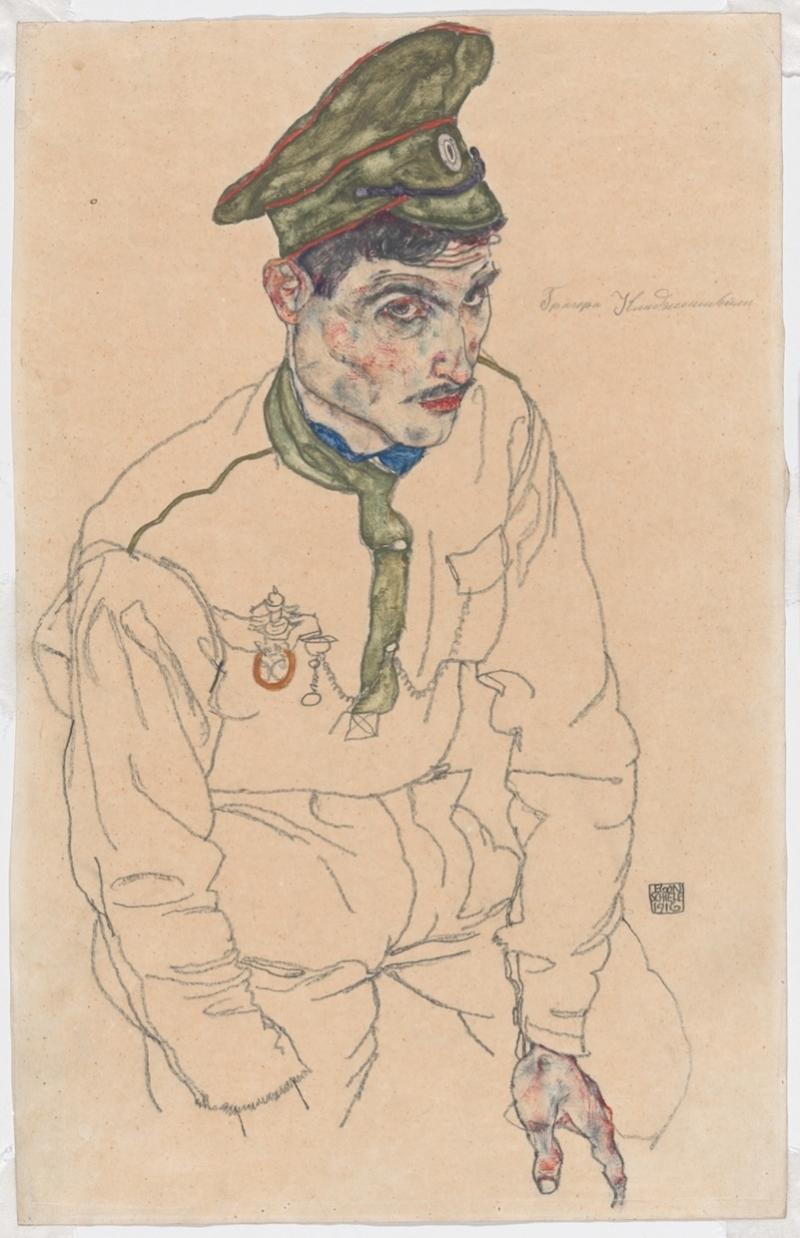A Nazi-Era Case Lands in Criminal Court

Egon Schiele, Russian Prisoner of War, 1916, watercolor and graphite, The Art Institute of Chicago. Image and additional information at this link.
An unusual art restitution case is currently being heard in New York criminal court. The heirs of Fritz Grünbaum, an Austrian cabaret performer and Holocaust victim, are seeking the return of Egon Schiele's watercolor and graphite piece Russian Prisoner of War (1916) from the Art Institute of Chicago (AIC). Grünbaum, a noted art collector, possessed a substantial collection of modern works, including over 80 pieces by Schiele. He was arrested by Nazi authorities in 1938 and forced to transfer assets to his wife, Elisabeth, from Dachau, where he died in 1941. The plaintiffs, Timothy Reif, David Fraenkel, and Milos Vavra, heirs to Grünbaum’s estate, assert that the artwork was unlawfully taken by the Nazis and later trafficked through art dealers after World War II, including New York City-based dealer Otto Kallir. They argue that under New York law, title to stolen property cannot be legally transferred.
The two sides in the case present very different stories about the fate of the art collection. Following Grünbaum’s death, Elisabeth was forced to liquidate their assets under duress before being deported to the Maly Trostinec concentration camp, where she was murdered. The artwork, along with other pieces, resurfaced decades later, passing through various dealers before being acquired by the AIC in 1966. The case, filed in the Southern District of New York, hinges on the provenance of the artwork and whether AIC conducted a reasonable investigation into its history before acquiring it. The plaintiffs cite historical records, expert testimonies, and previous court rulings, including a 2018 New York decision affirming the invalidity of coerced transactions under Nazi duress. The Manhattan District Attorney’s Antiquities Trafficking Unit brought the case, seizing similar artworks from Grünbaum’s collection and returning them to the heirs. AIC counters that the artwork was lawfully acquired, arguing that Elisabeth’s sister Mathilde Lukacs sold the piece in the 1950s, long after the Nazi era. They maintain that the plaintiffs’ claims are without merit and that the museum holds clear title to the drawing.
This case underscores the ongoing challenges in determining provenance, particularly for artworks with complex histories involving forced transactions and post-war trafficking. If successful, the case could set a precedent for similar claims, reinforcing the principle that stolen property cannot be legally retained, regardless of subsequent transactions. The court’s decision will not only impact the rightful ownership of Russian Prisoner of War. It also reflects a broader movement to promote research, transparency and belated justice for Holocaust victims and their families. Updates on the case may be requested from the New York court here.